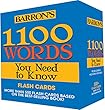Want to bring the beauty of nature right to your doorstep and capture breathtaking bird photos without the hassle of trekking through the woods? A camera bird feeder is your answer. These ingenious feeders combine a food source with a cleverly concealed camera, allowing you to get up close and personal with your feathered friends from the comfort of your own home. But getting truly stunning shots requires more than just setting up the feeder. Let’s dive into the art of capturing those award-winning bird photographs.
Choosing the Right Camera Bird Feeder

The market offers a variety of camera bird feeders, ranging from simple designs to sophisticated models with features like remote viewing and high-definition video. Before you buy, consider these key factors:
Camera Quality:

Resolution is king. Look for a feeder with a high-resolution camera (at least 1080p) capable of capturing crisp, detailed images. The better the resolution, the more you’ll be able to appreciate the intricate details of the birds’ plumage and behavior. Consider features like night vision if you want to capture nocturnal visitors.
Feeding Mechanism:
Different feeders use different mechanisms to dispense food. Some use gravity-fed systems, while others utilize a rotating tray or auger. Choose a system that suits your preferred birdseed type and prevents spillage. Consider features that minimize seed waste and keep the area clean.
Durability and Weather Resistance:
Your feeder will be exposed to the elements, so durability is paramount. Look for a feeder made from weather-resistant materials like sturdy plastic or metal. It should be able to withstand rain, snow, and extreme temperatures without damage.
Ease of Use and Maintenance:
Consider how easy the feeder is to set up, clean, and refill. A feeder with easy access to the camera and the food compartment will save you time and effort in the long run. Look for designs that minimize cleaning and maintenance needs.
Mounting Options:
Think about where you want to place your feeder. Some models come with mounting brackets for easy attachment to trees, posts, or even windows. Consider the feeder’s size and weight when selecting a mounting location.
Mastering the Art of Bird Photography

Having the right equipment is only half the battle. To truly capture stunning images, you need to understand a few key photographic techniques:
Lighting:
Natural light is your best friend. Avoid harsh midday sun, which can create harsh shadows and wash out colors. The best time to shoot is during the “golden hours”—sunrise and sunset—when the light is soft and warm.
Composition:
Think about the background and how it interacts with your subject. A cluttered background can distract from the bird. Try to position the feeder so that the background is simple and uncluttered, allowing the bird to stand out.
Patience:
Bird photography requires patience. Birds are unpredictable, and you’ll likely need to wait for the perfect moment to capture the ideal shot. Be prepared to spend some time observing and waiting for the birds to feel comfortable enough to feed.
Focus and Sharpness:

Make sure your camera is focused sharply on the bird. A blurry image ruins even the most perfectly composed shot. Experiment with different focus settings to find what works best for your camera and feeder setup.
Understanding Bird Behavior:
Learning about the habits and behaviors of the birds you’re trying to photograph will significantly improve your chances of success. Understanding what types of food they prefer, when they’re most active, and their typical feeding behaviors will help you predict their movements and get the best shots.
Optimizing Your Camera Bird Feeder Setup
To maximize your photographic success, consider these setup tips:
Location, Location, Location:
Place your feeder in a location that is easily accessible to birds but offers some cover or protection from predators. Consider the proximity to trees and bushes that birds might use as perches before visiting the feeder.
Camouflage:
While you need to see the birds, avoid making the camera feeder too obvious. Use natural materials to camouflage the feeder and minimize its visual impact on the birds.
Background Considerations:
Keep an eye on the background. A simple, uncluttered background helps highlight the birds. Avoid busy patterns or distracting elements.
Experiment with Angles and Perspectives:
Don’t be afraid to experiment with different angles and perspectives. Try shooting from different heights and distances to achieve unique and engaging shots.
Beyond the Still Image: Video Capabilities
Many camera bird feeders offer video recording capabilities. This opens up a whole new world of opportunities to capture amazing bird behavior. Think about the potential for recording birds feeding, interacting with each other, or even displaying unique courtship rituals. High-quality video can create truly captivating nature documentaries right in your backyard.
A camera bird feeder can be a fantastic tool for bringing the wonders of the avian world directly to you. By combining the right equipment, photographic techniques, and a little bit of patience, you can create stunning images and videos that will capture the beauty and wonder of nature. So, get out there, set up your feeder, and start capturing those incredible bird photos!




